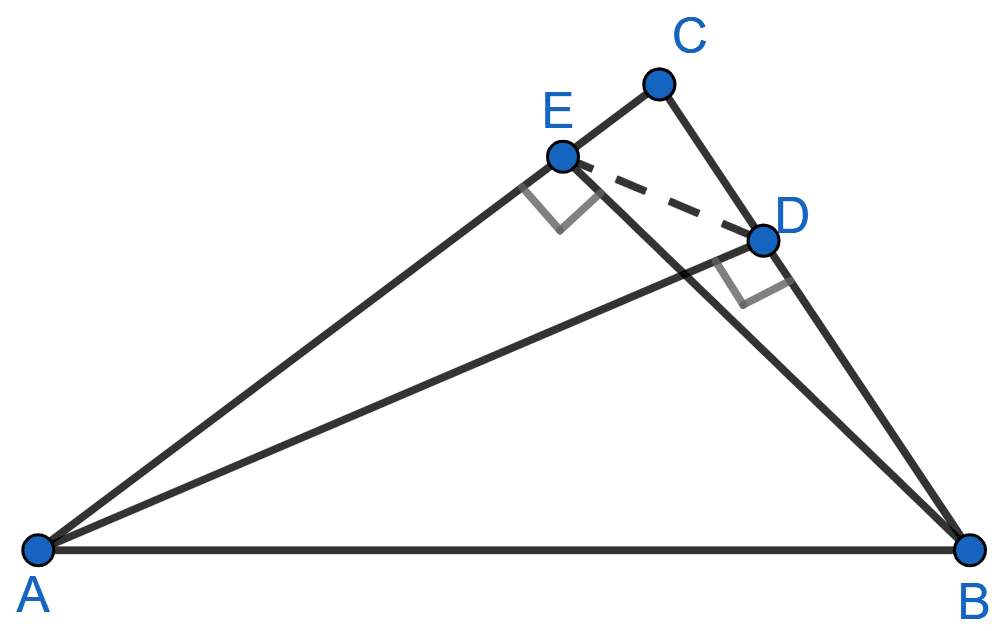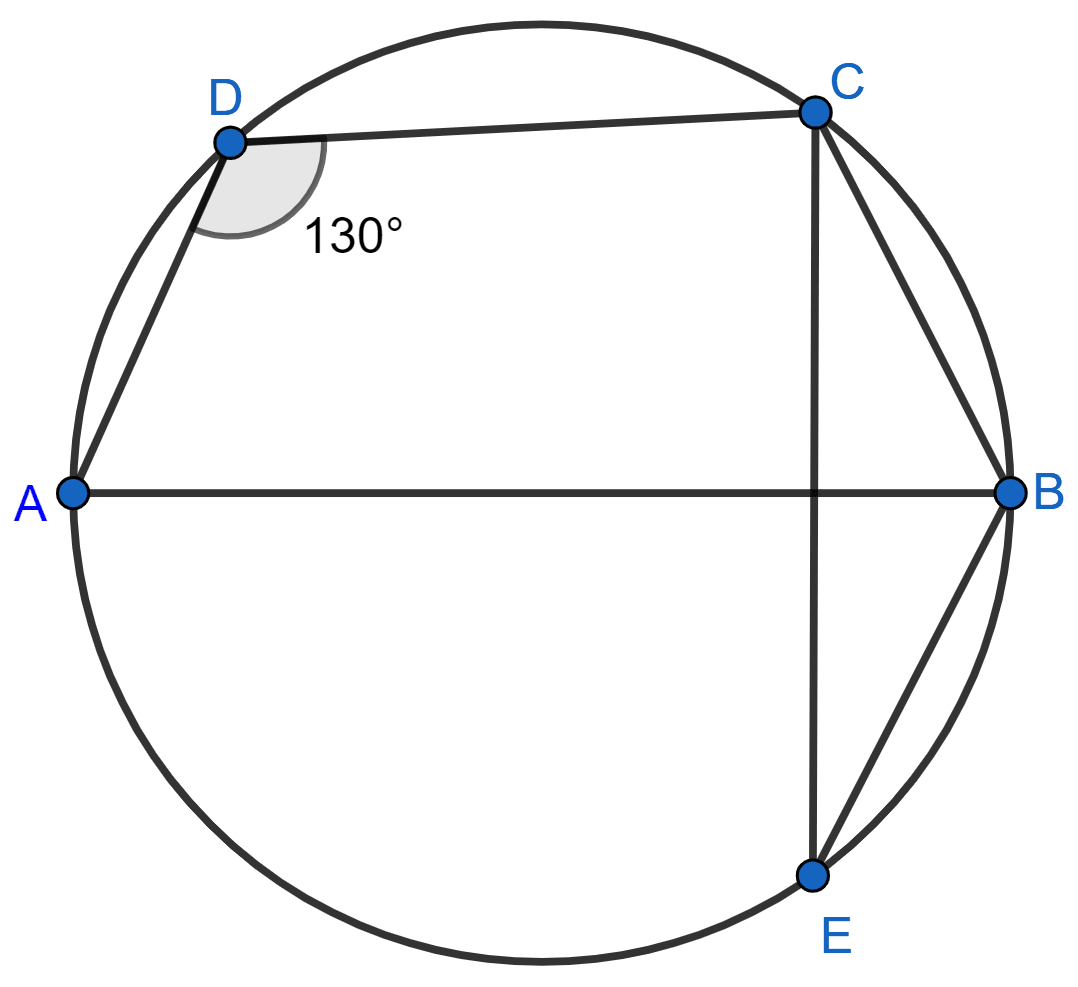Mathematics
Use graph paper for this question. Take 2 cm = 1 unit on both axes.
(i) Plot the points A(1, 1), B(5, 3) and C(2, 7).
(ii) Construct the locus of points equidistant from A and B.
(iii) Construct the locus of points equidistant from AB and AC.
(iv) Locate the point P such that PA = PB and P is equidistant from AB and AC.
(v) Measure and record the length PA in cm.
Answer
Steps of construction :
Plot the points A(1, 1), B(5, 3) and C(2, 7).
Join the points AB, BC, and AC to form a triangle.
Draw DE, perpendicular bisector of AB. (As locus of points equidistant from two points is the perpendicular bisector of line joining them).
Draw AF, angle bisector of A. (As locus of points equidistant from two lines is the angular bisector of angle between them).
Mark point P as the intersection of DE and AF.
Measure AP.

Hence, AP = 2.8 cm.
Related Questions
The following figure shows a triangle ABC in which AD and BE are perpendiculars to BC and AC respectively.
Show that :
(i) △ADC ~ △BEC
(ii) CA × CE = CB × CD
(iii) △ABC ~ △DEC
(iv) CD × AB = CA × DE

In triangle ABC, D is mid-point of AB and CD is perpendicular to AB. Bisector of ∠ABC meets CD at E and AC at F. Prove that :
(i) E is equidistant from A and B.
(ii) F is equidistant from AB and BC.
The speed of sound is 332 meters per second. A gun is fired. Describe the locus of all the people on the earth's surface, who hear the sound exactly one second later.
In the given figure, ∠ADC = 130° and BC = BE. Find ∠CBE if AB ⊥ CE.
